California’s High-Speed Rail Authority has revealed detailed plans for four stations along the Central Valley segment. While High-Speed Rail remains a distant prospect for the Bay Area, construction on the 171-mile portion winding through the San Joaquin Valley shows steady progress. Previous statements by the Governor suggest that work connecting the Bay Area with the central line will not start until after the Central Valley tracks begin operating in the 2030s.
Foster + Partners and ARUP are responsible for the design and engineering. The canopy for all four locations is nearly identical, providing a recognizable architectural vernacular to be shared across the region. Beyond that, distinct treatment has been given for each of the concourses and main entrances. The Merced station is particularly noteworthy, where the grand stairwells will be bookmarked by large cobblestone walls capped by open wood roofing.
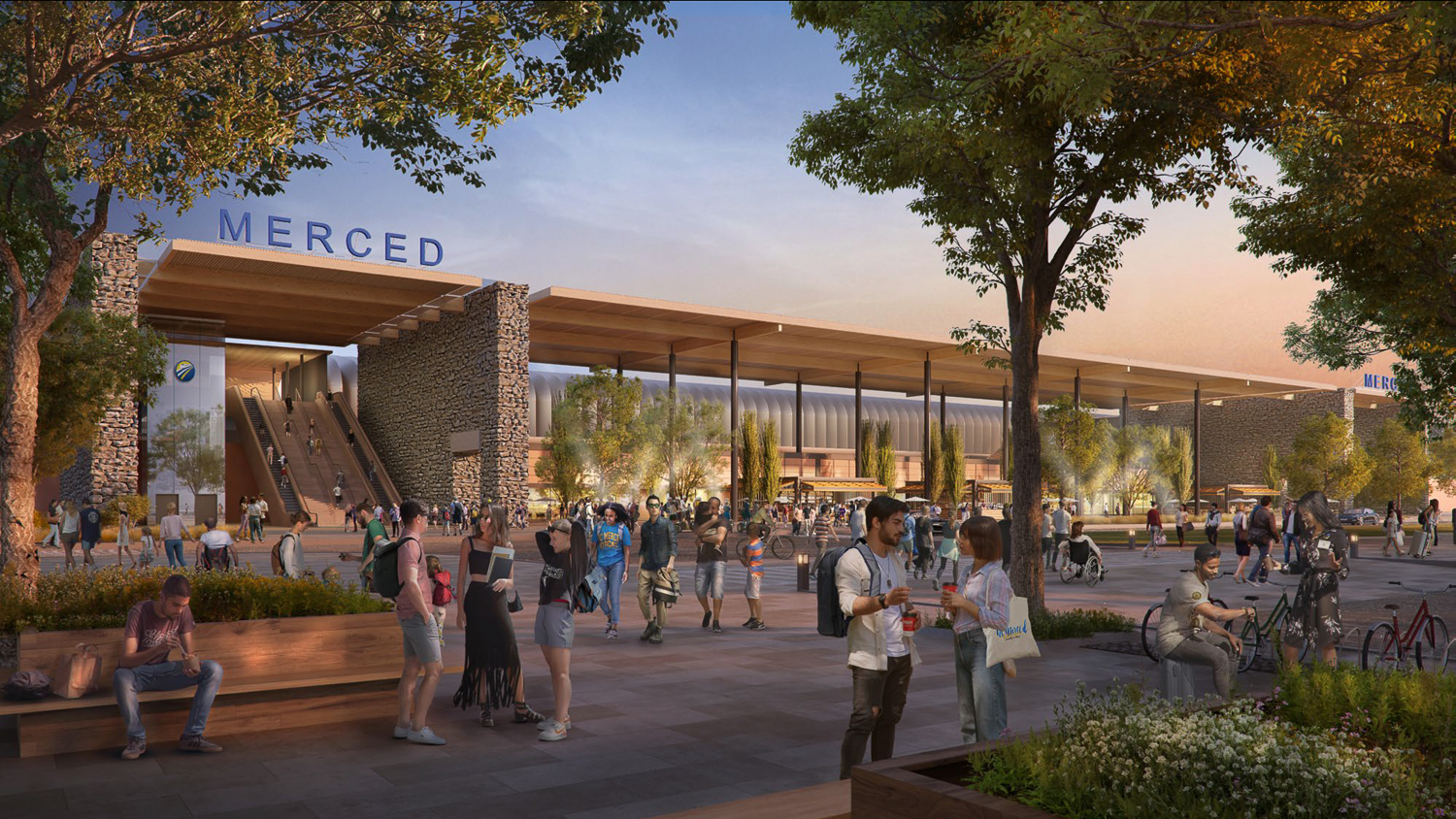
Merced Station entrance, rendering by Foster + Partners
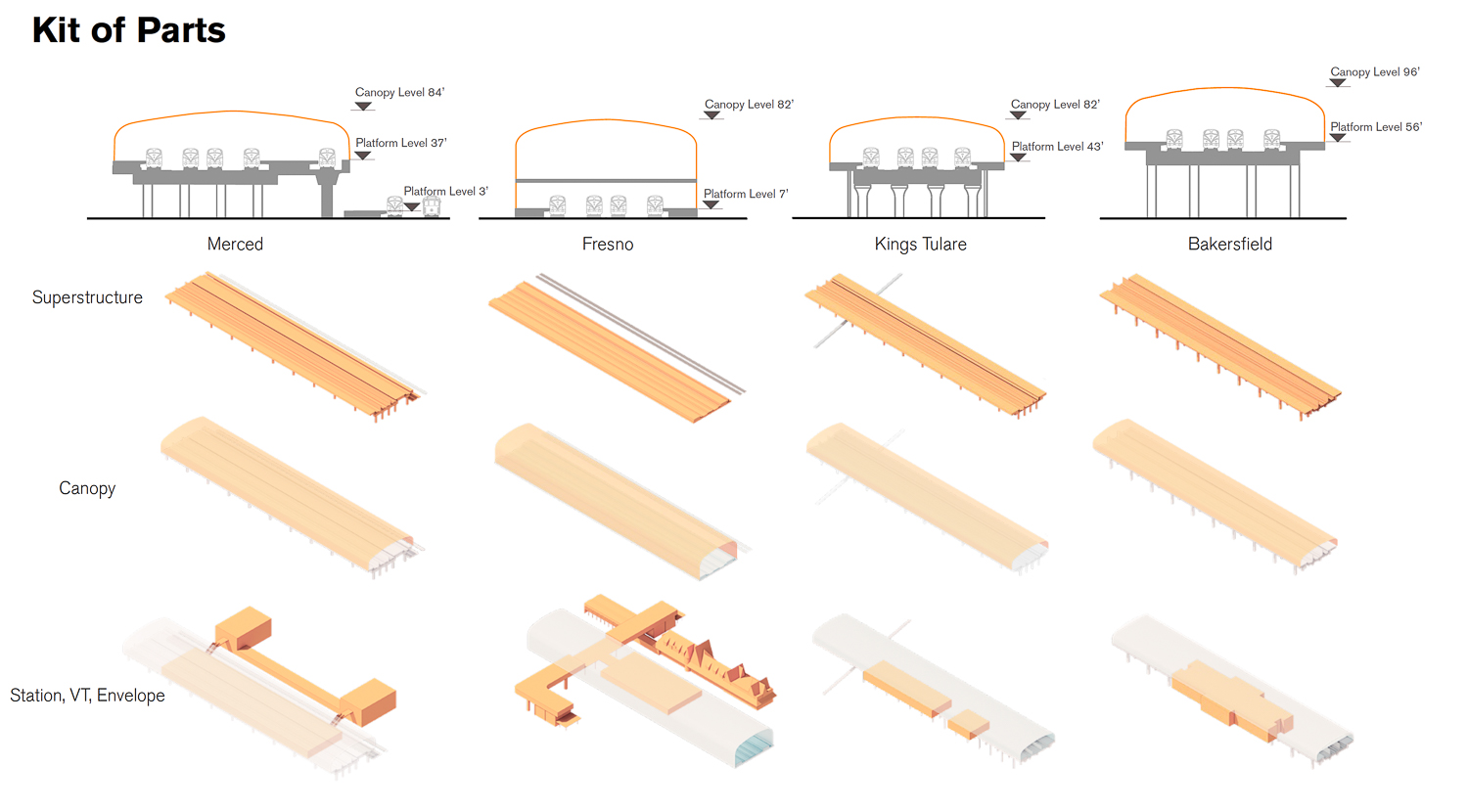
High Speed Rail Station design elements, illustration by Foster + Partners
The four station plans shared include Merced, Fresno, Kings/Tulare, and Bakersfield. Each station will have an 80 to 90-foot-tall metal canopy covering the superstructures. Three stations will have raised platforms where riders board the trains, with Fresno as the outlier. Kings/Tulare and Bakersfield will have their entire station and concourse beneath the platform. In Merced, the station will be immediately next to 15th Street, while an elevated walkway over ACE and freight train tracks will connect to additional waiting space and bus depot functions along 16th Street.
The raised-platform stations will each have similar programs, with the waiting room concourse fitting below the overpass. Fare gates will be fitted at each station, making the experience more similar to BART than Caltrain for Bay Area riders.
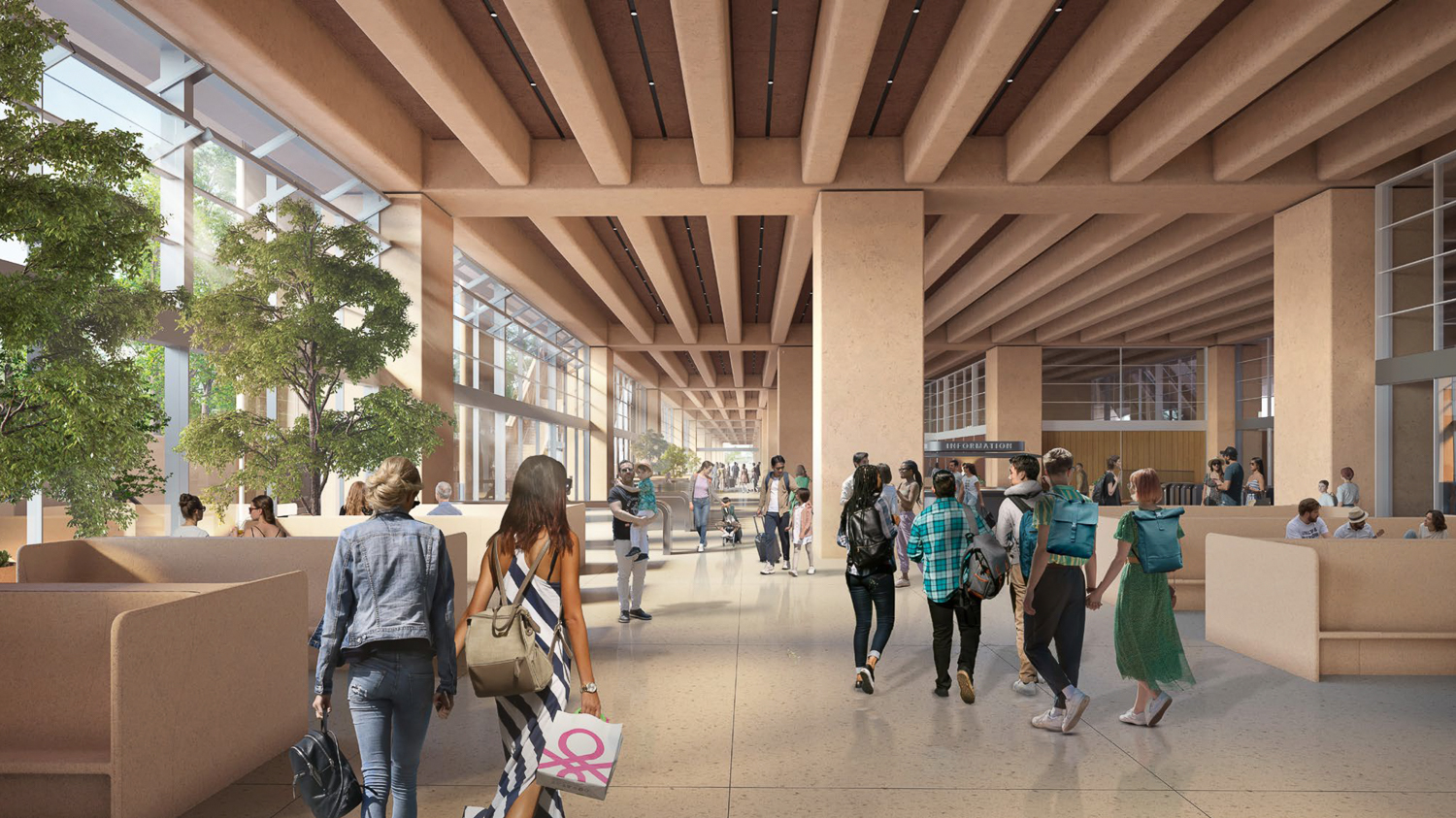
Merced Station concourse, rendering by Foster + Partners
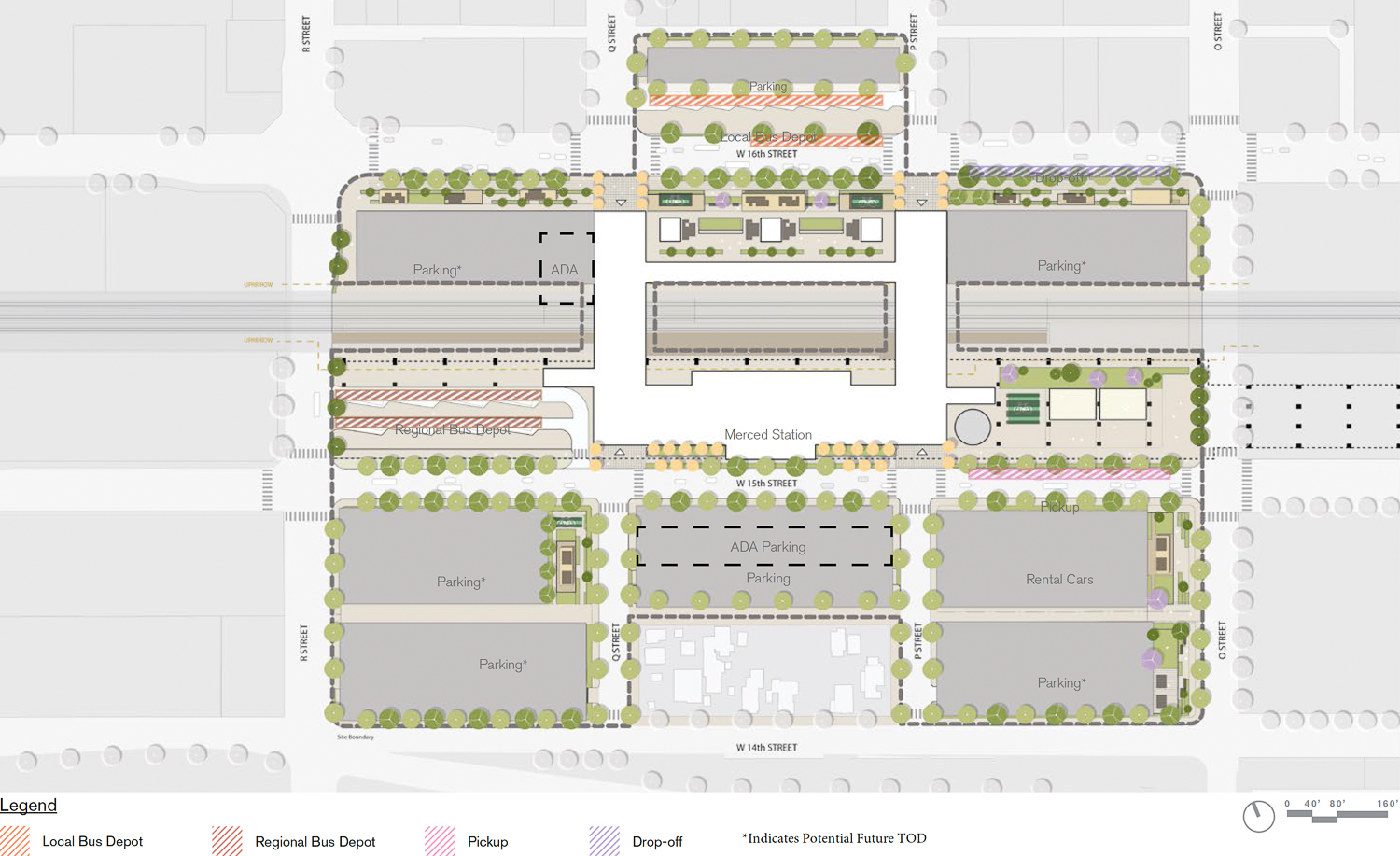
Merced Station site map, illustration by Foster + Partners
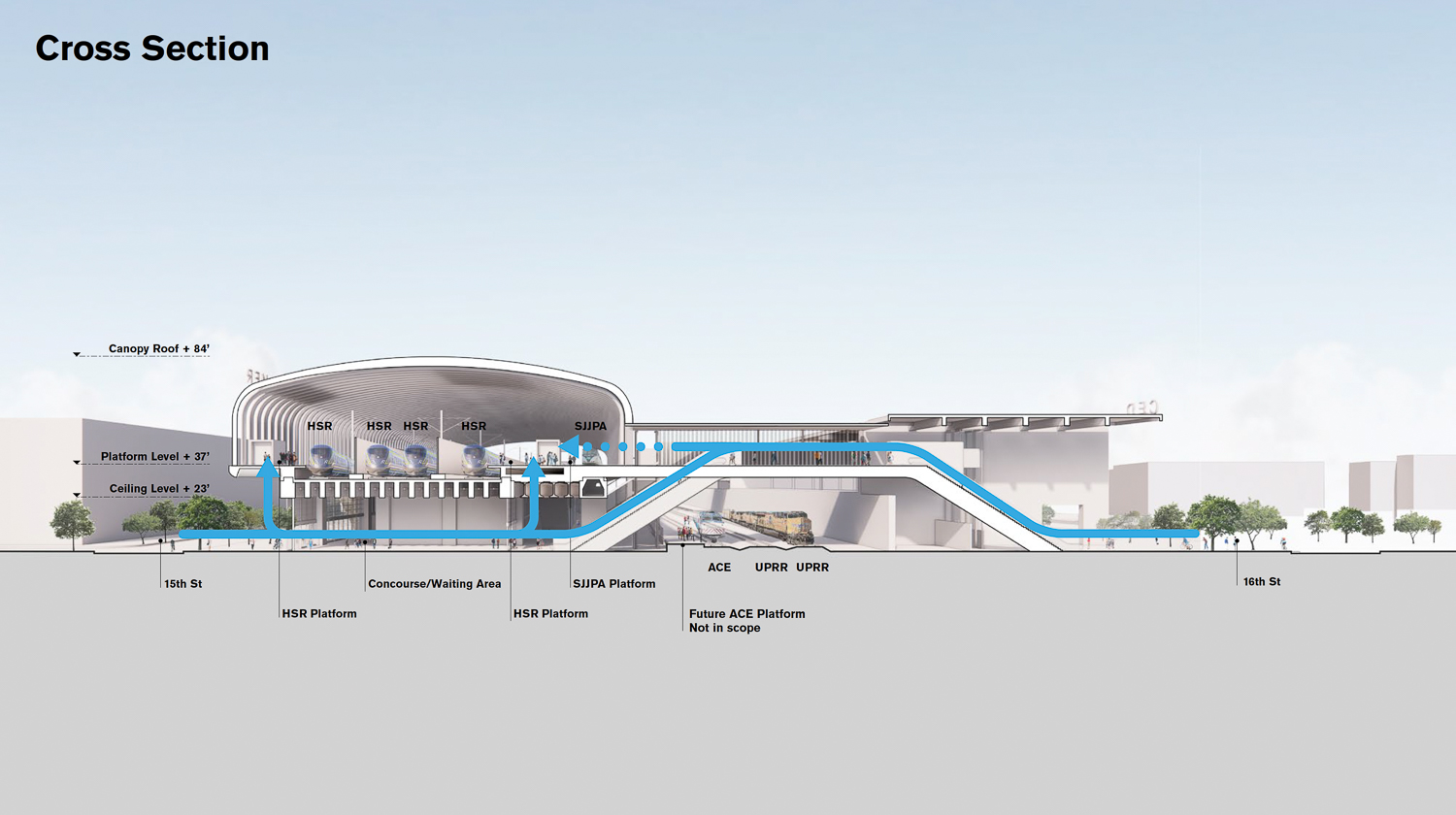
Merced Station cross section, illustration by Foster + Partners
The Merced Station will feature a 37-foot raised platform running next to active rails serviced by ACE Rail and Union Pacific Railroad. The transit hub will be paired with parking for 3,390 cars and 1,160 bicycles.
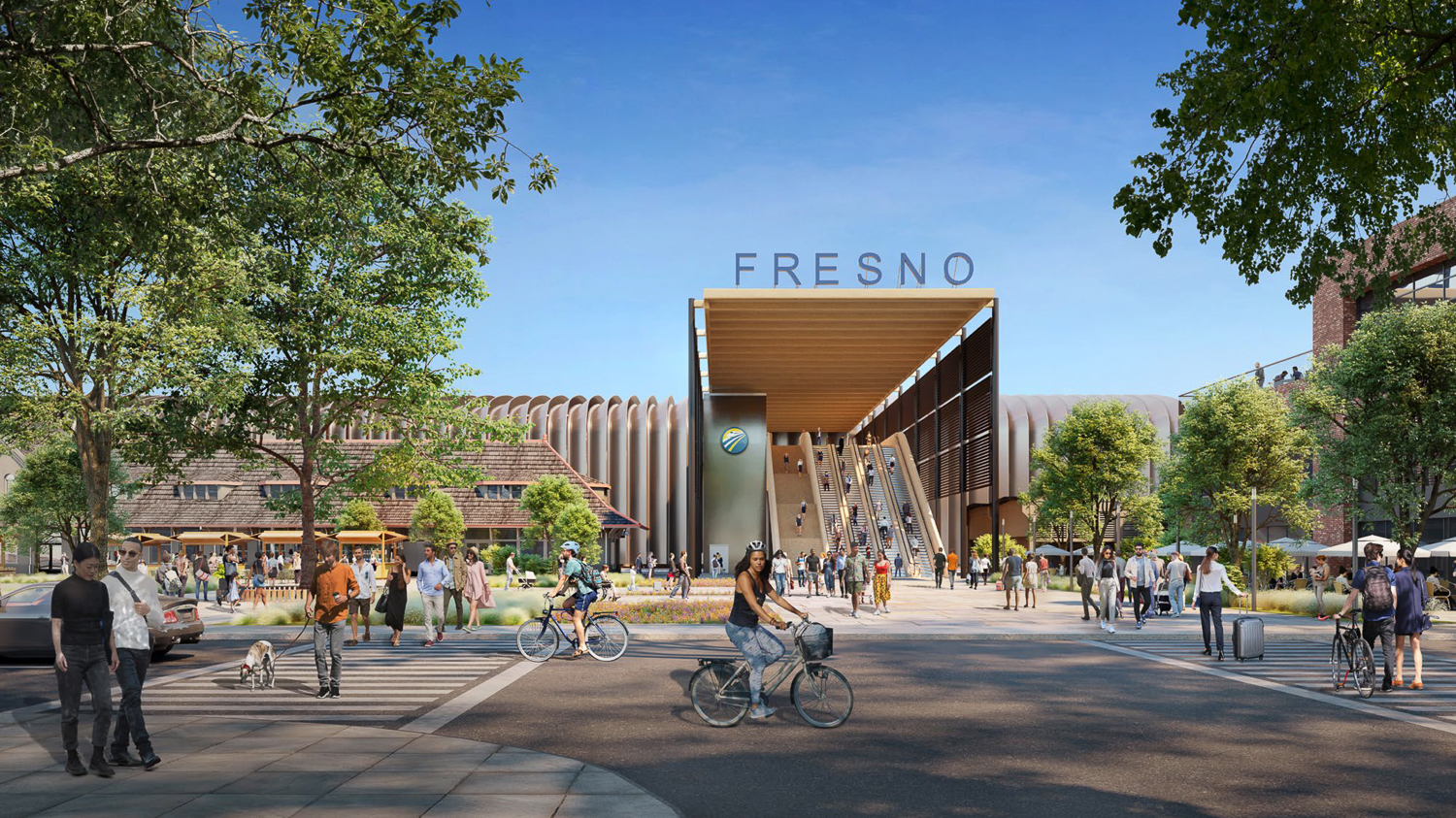
Fresno Station main entrance, rendering by Foster + Partners
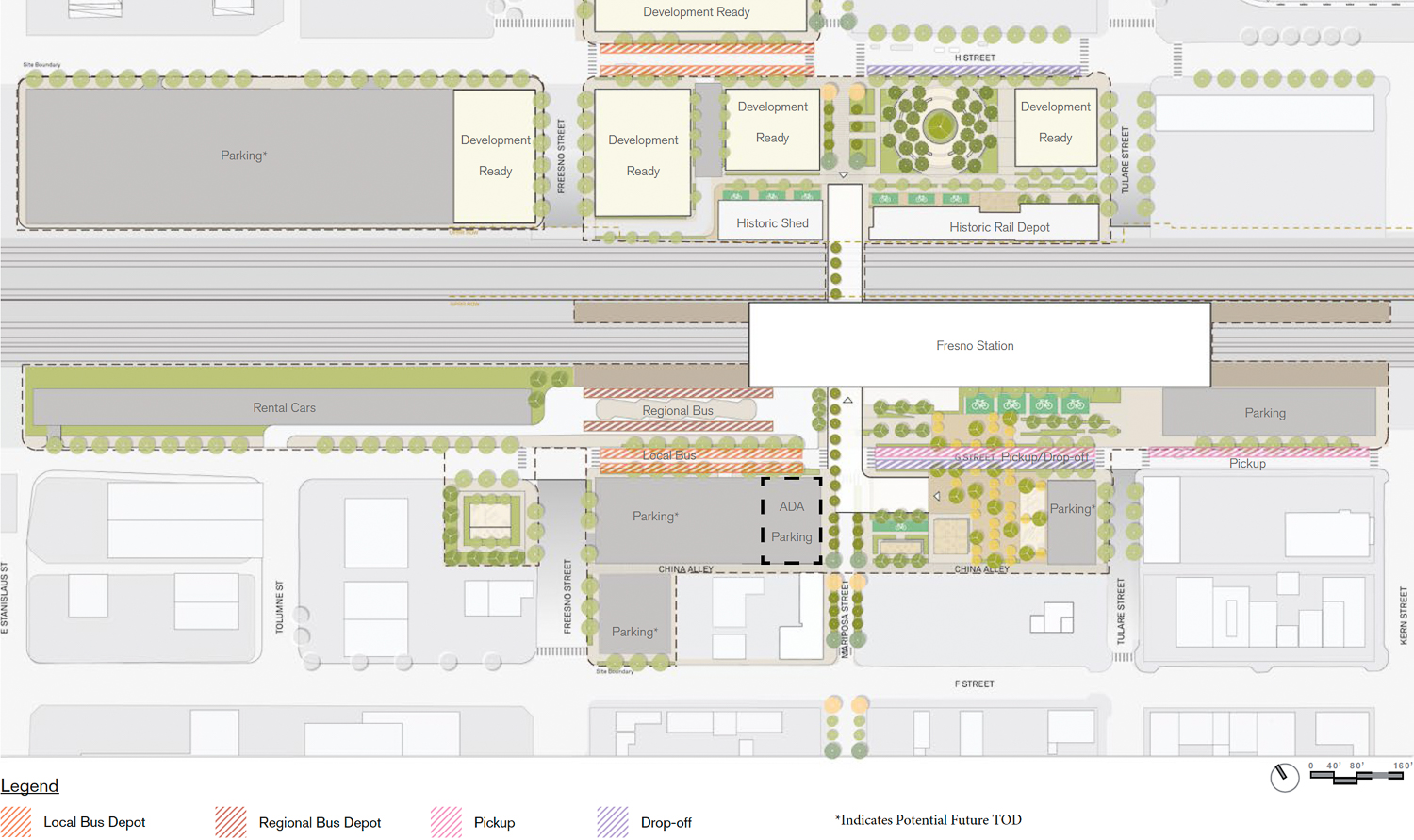
Fresno Station site map, illustration by Foster + Partners
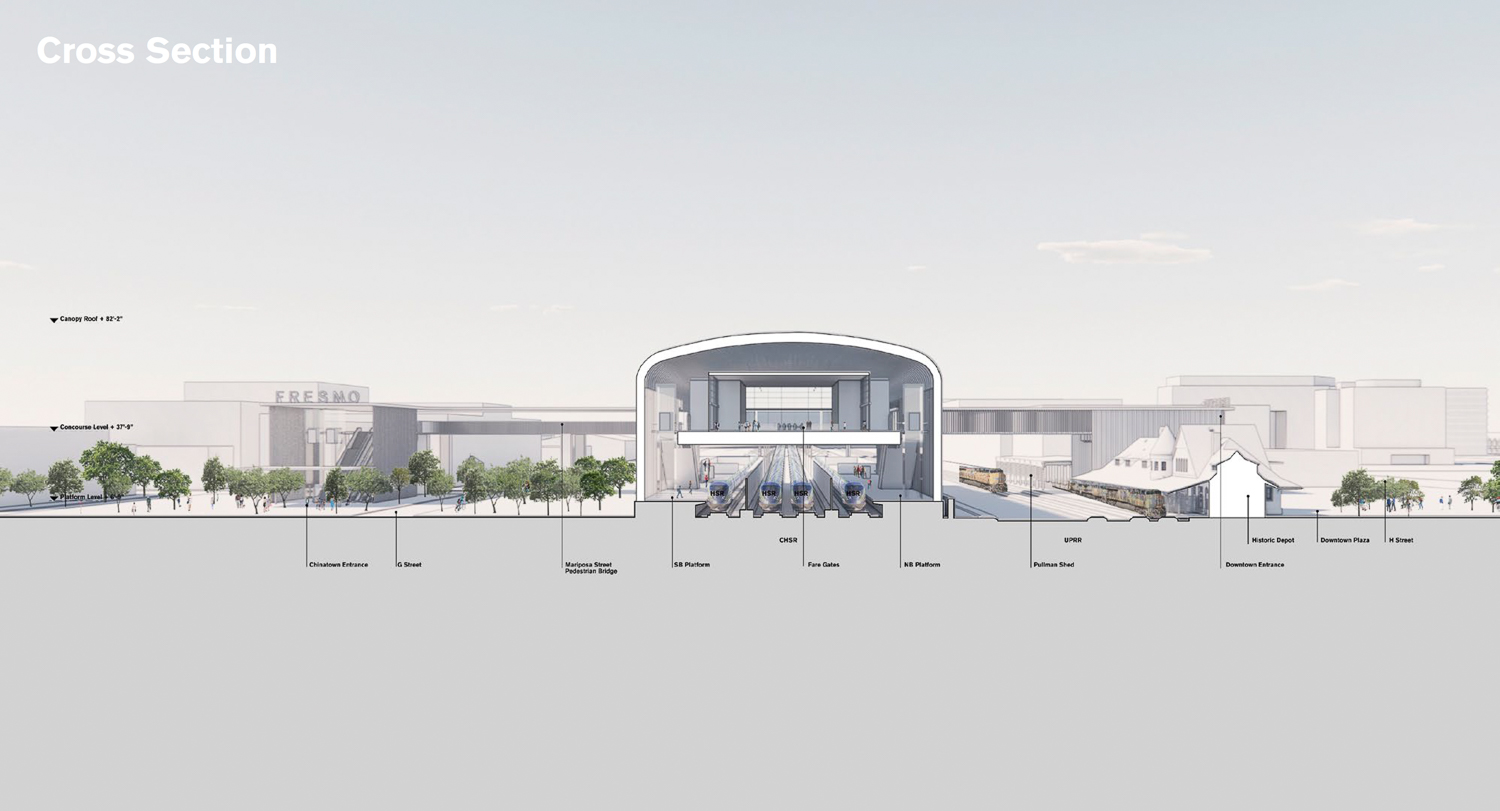
Fresno Station vertical cross section, illustration by Foster + Partners
In Fresno, the proposed station will have two pedestrian bridges extending over adjacent thoroughfares. One bridge will pass over freight train tracks to the Downtown Plaza and historic train depot. The second bridge will rise over the regional bus connector and car drop-off points and give direct access to a parking garage. The station will include parking for 3,390 cars and 2,580 bicycles.
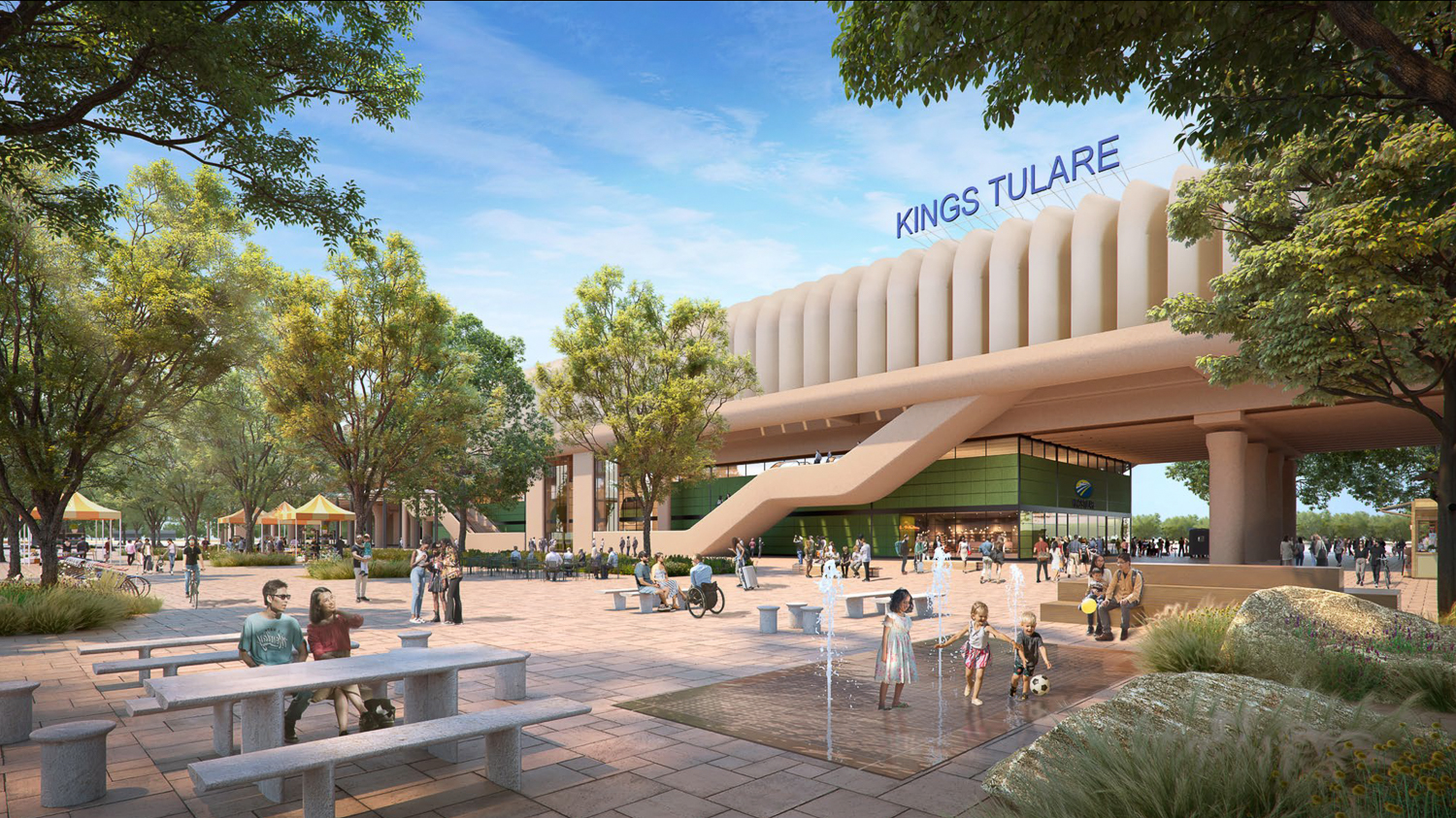
Kings Tulare station pedestrian view, rendering by Foster + Partners
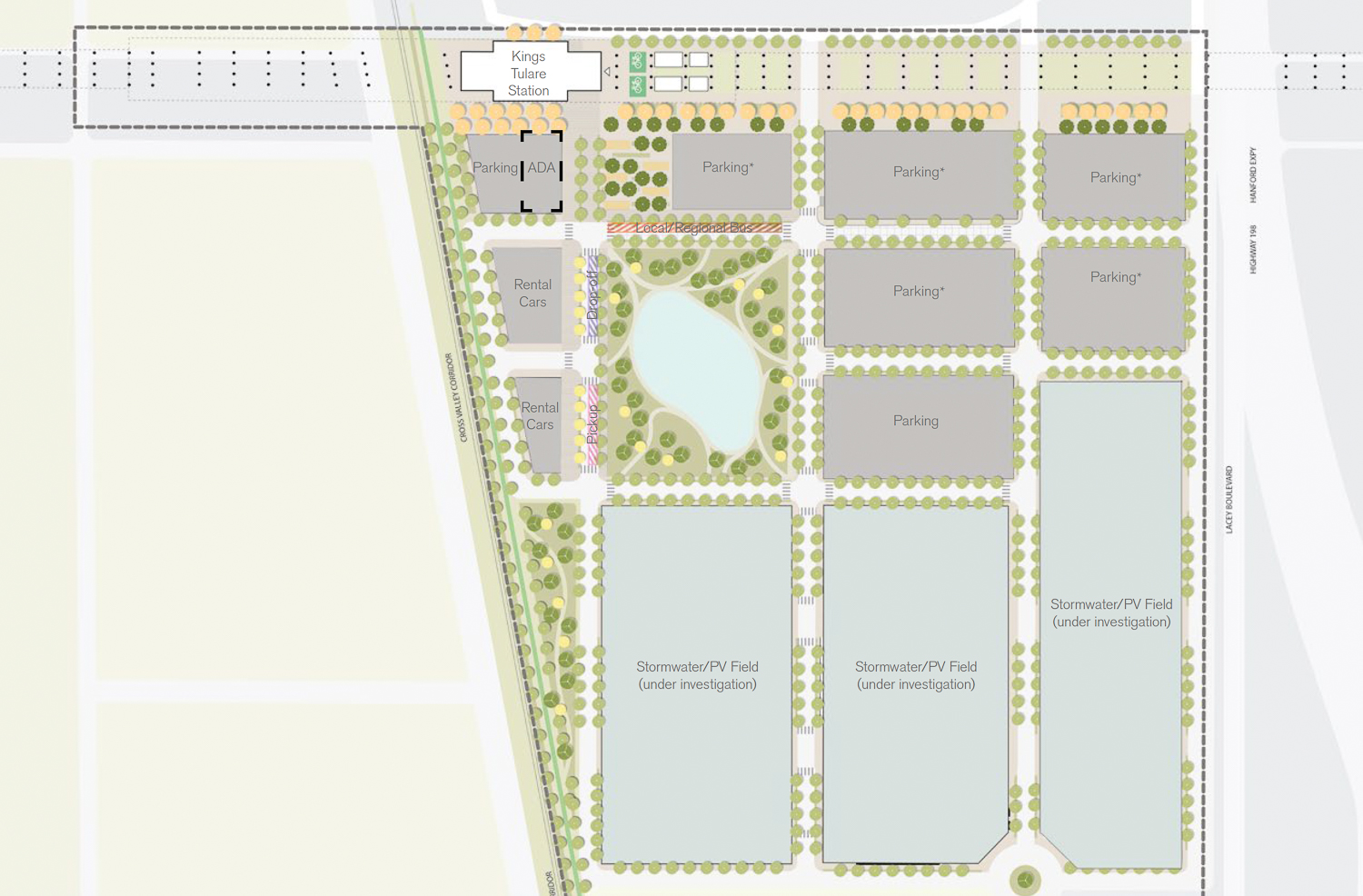
Kings Tulare station masterplan, rendering by Foster + Partners
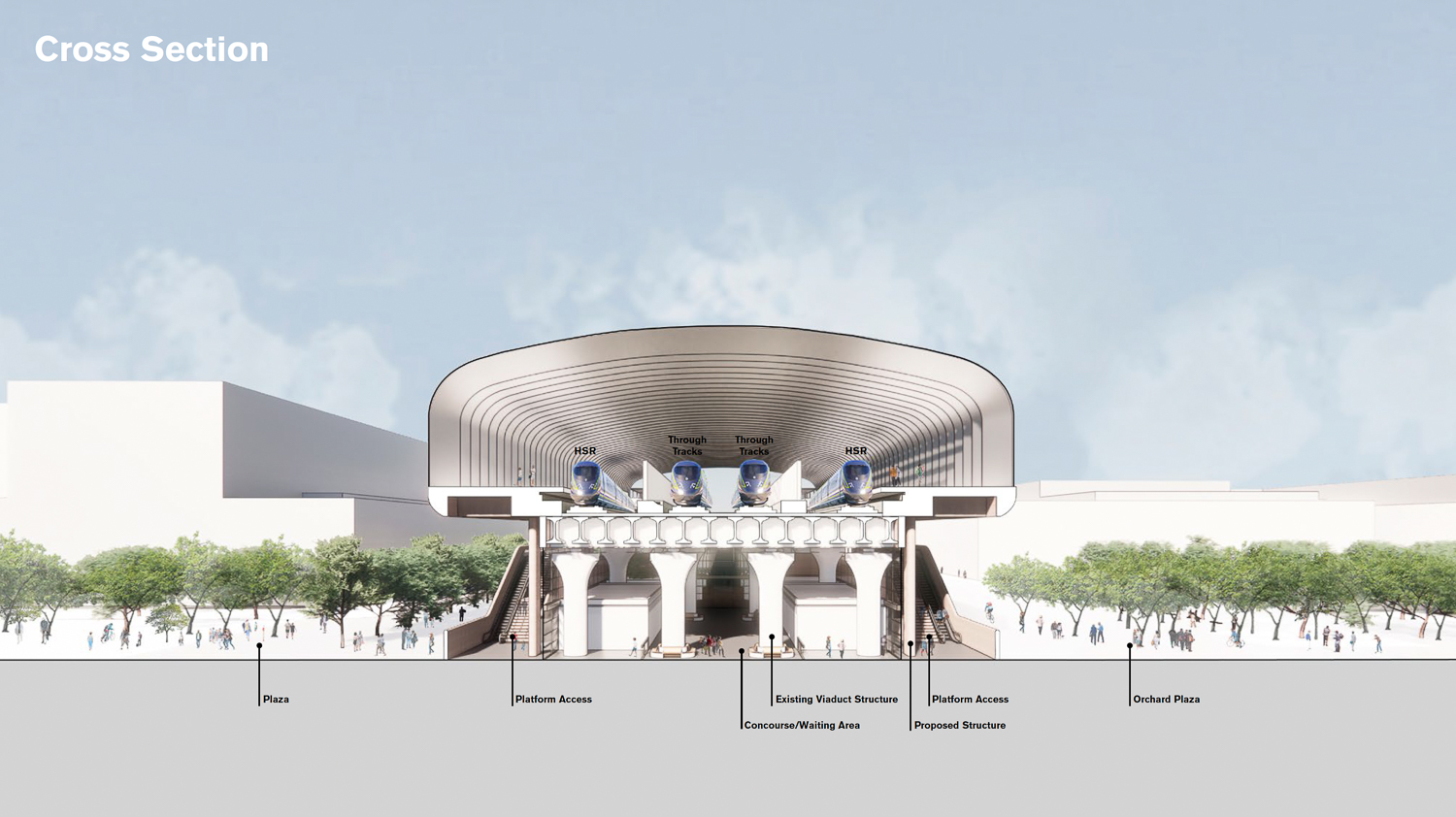
Kings Tulare station cross-section, rendering by Foster + Partners
The Kings/Tulare station will run next to Hanford, the most populous city in Kings County. The station’s platform will be raised 56 feet, allowing trains to pass over the adjacent Route 198 highway. The site plan includes parking for 2,870 cars and 290 bicycles. Transit bus bays and pick-up spaces will be incorporated immediately next to a landscaped public park. The parking will be spread across several surface lots surrounding.
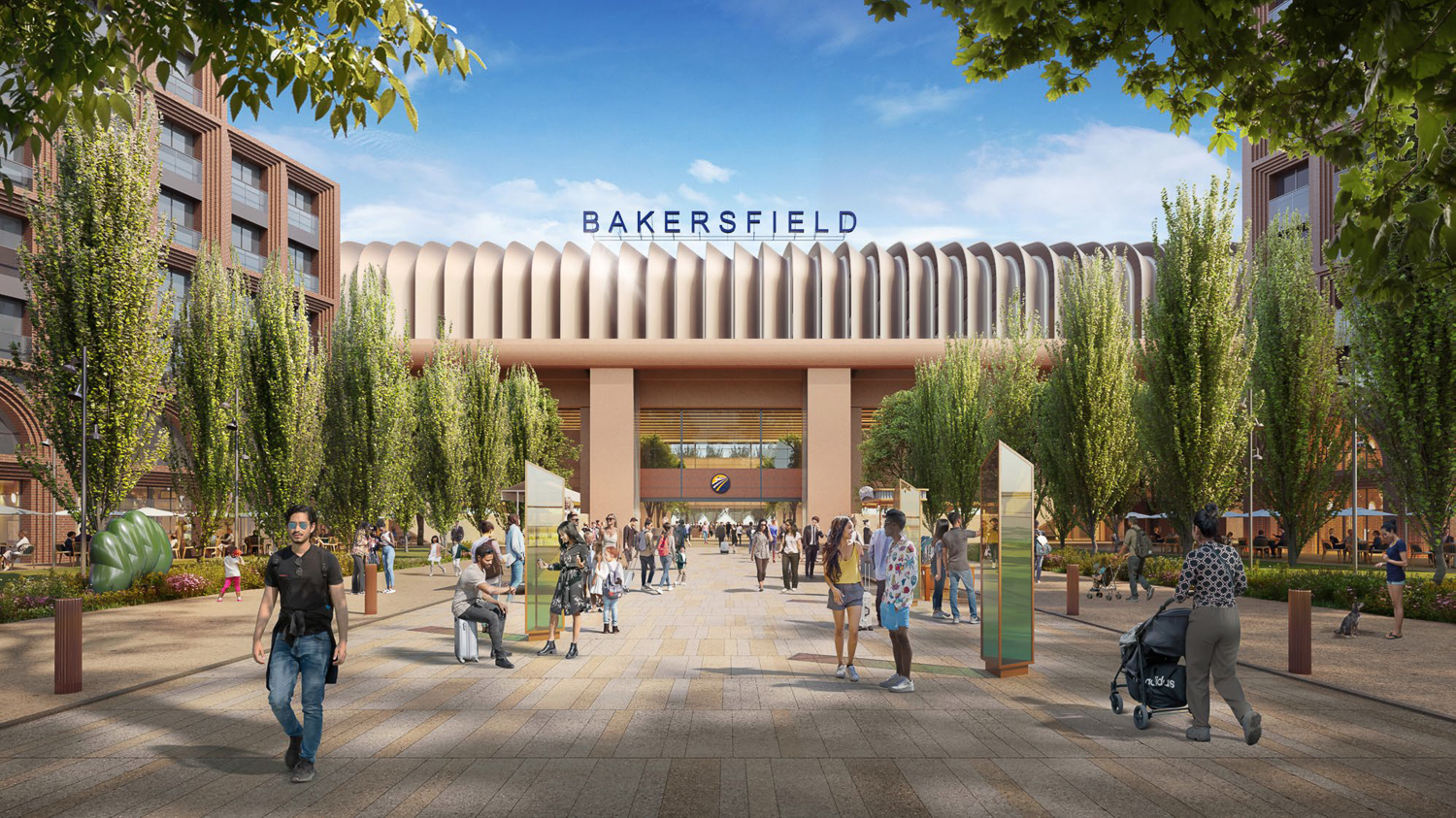
Bakersfield Station pedestrian view, rendering by Foster + Partners
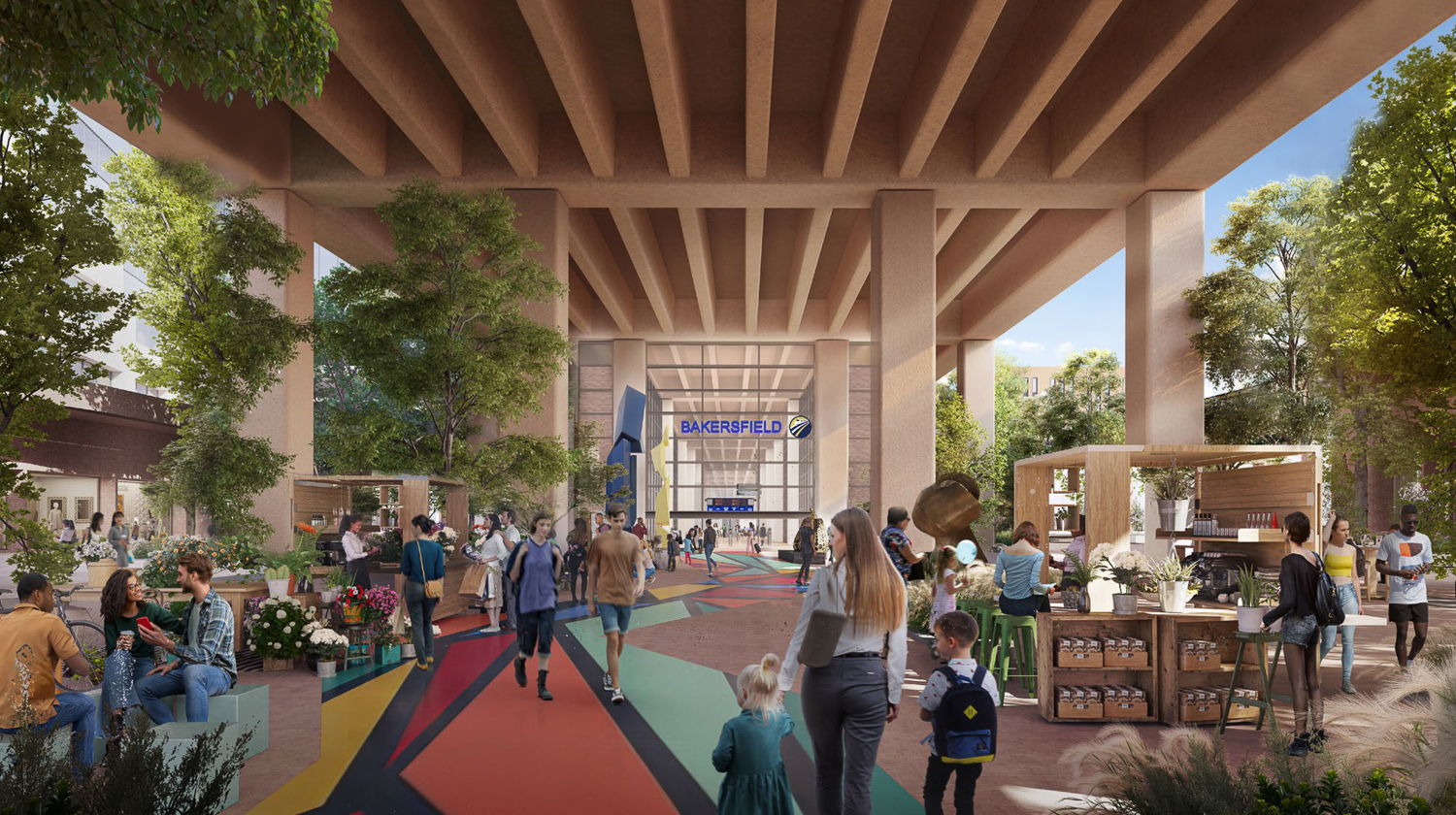
Bakersfield Station of the public open space under the overpass, rendering by Foster + Partners
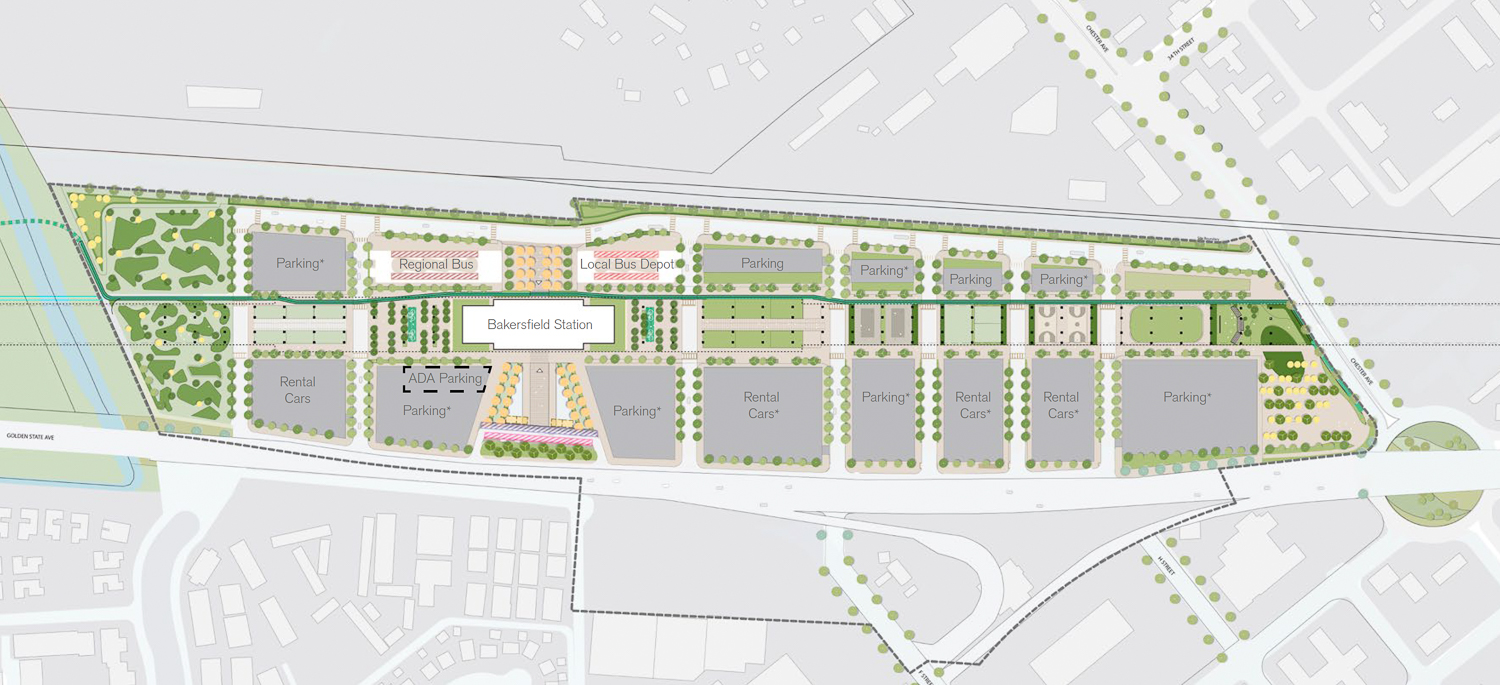
Bakersfield Station site map, illustration by Foster + Partners
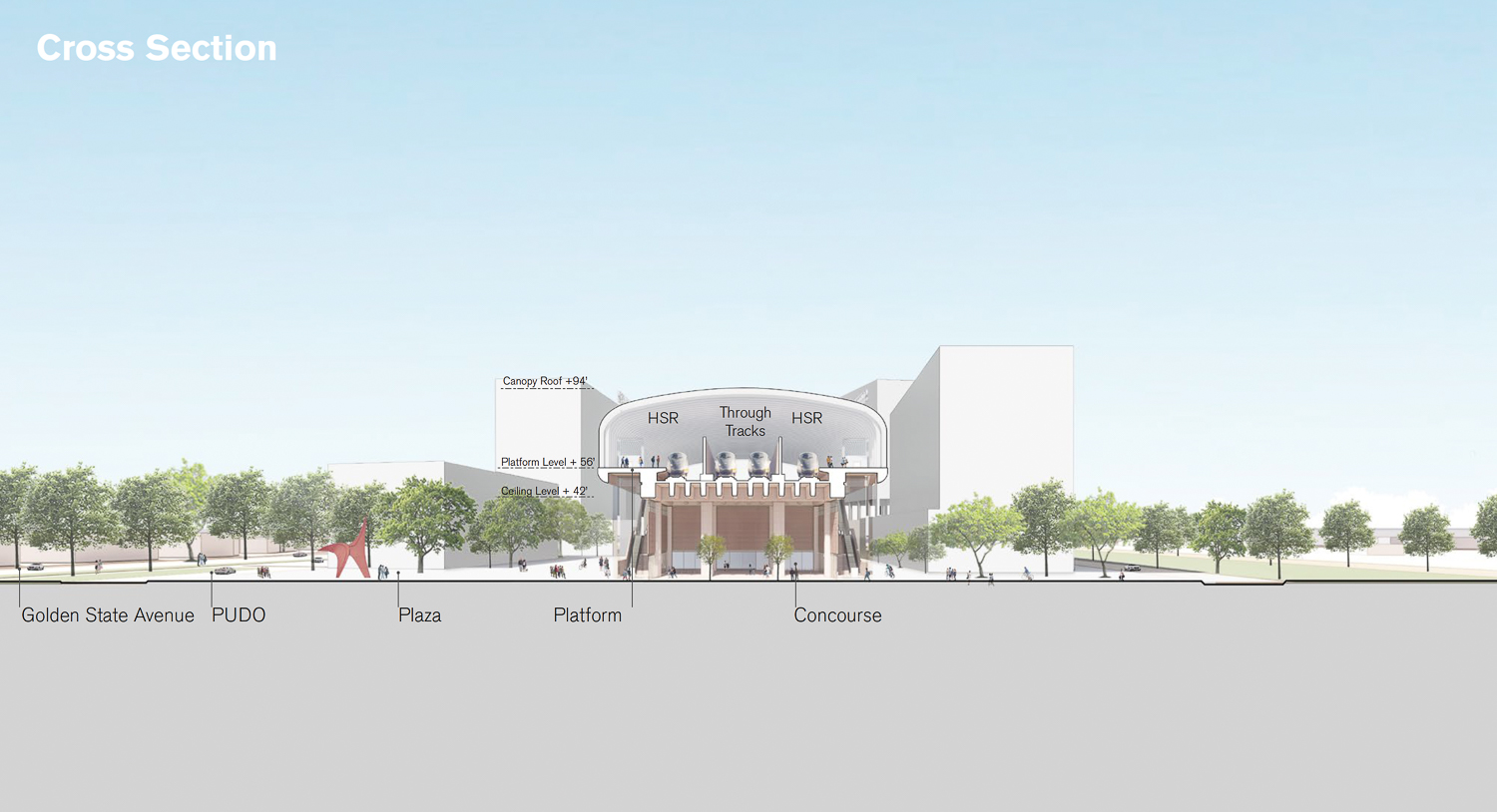
Bakersfield Station cross-section, illustration by Foster + Partners
Similarly to Kings/Tulare, the Bakersfield station will maintain a relatively small footprint for the transit hub while the surrounding area will be covered in a sea of parking for 3,440 cars and outdoor landscaping. Additional space will be made for 590 bicycles. Illustrations show the space below the viaduct will receive special treatment with landscaping, public art, and space for outdoor shops.
Each master plan also stipulated that much of the associated parking can be considered for future transit-oriented development. Construction progress between the Bakersfield Station and the Madera Stop has been documented, focusing heavily on viaducts and bridge portions as the major milestones. Pre-development for the stations is expected to be finished sometime between 2026 and 2027, and station construction may start as early as 2027. Early-work construction for the stations, including demolition and site preparation, could start as early as next year.
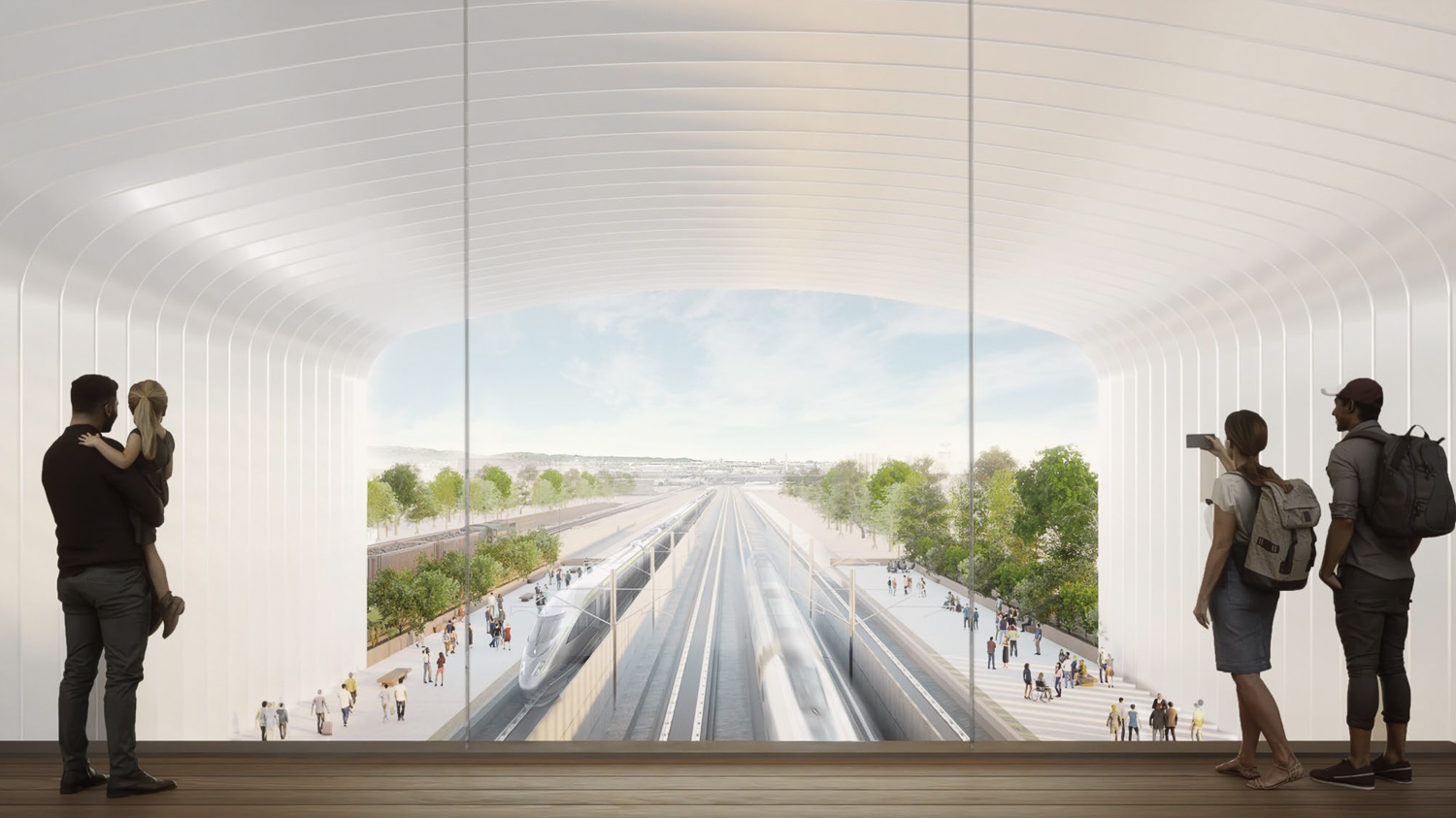
Fresno Station view from by the fare gates, rendering by Foster + Partners
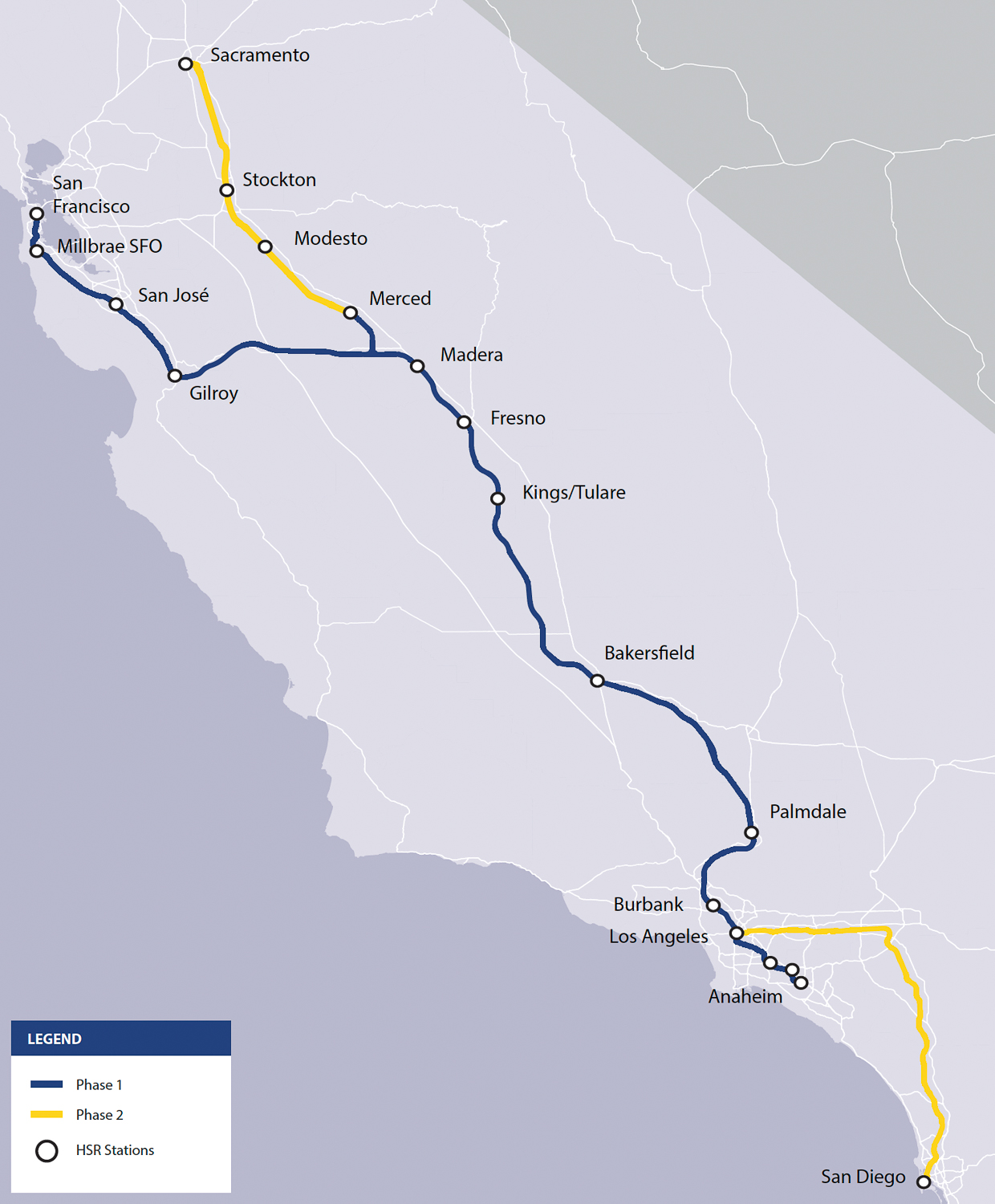
California High-Speed Rail statewide system, illustration by HSR Authority
HSR Authority hopes to start testing the train lines and trial runs for the Central Valley tracks by 2029 and 2030. While phase one of HSR will eventually include connections to San Francisco and Los Angeles, the timeline for bullet trains to start rolling up to the Transbay Terminal is unclear.
The project’s future is also highly dependent on funding, which has come in relatively piecemeal chunks owing to the astronomical price tag. California Voters approved plans for the high-speed rail back in 2008, expecting it to cost around $34 billion and open by 2020. By 2022, the price tag rose to $105 billion, surpassing the cost of the International Space Station. In a public report (pg 59) published by HSR last November, construction on phase one is estimated to cost between $88.5 billion and $127.9 billion, with $106.1 billion as the base projection.
Subscribe to YIMBY’s daily e-mail
Follow YIMBYgram for real-time photo updates
Like YIMBY on Facebook
Follow YIMBY’s Twitter for the latest in YIMBYnews

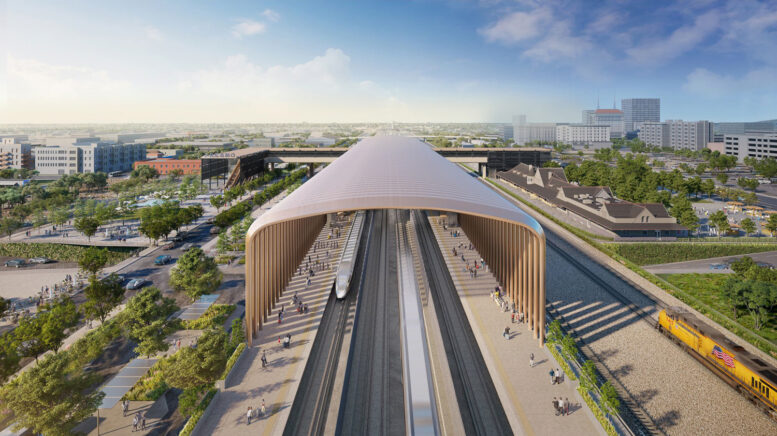
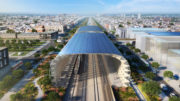
California high-speed railroad bottomlist pit, wait until the actual train car is procured I hope they put in the correct train tracks constricted? I see escalators but they need elevator access as well which I don’t see?
As if they’d forget elevators.
Sooner. Faster. More. We needed this for CA decades ago. I’m happy to see it started and wish we didn’t have to wait until the mid-2030s to have a functioning rail network
Get it done.
This project would be an absolute gamechanger for the state of California.
Pretty depressing to see all of the parking around these stations. It’s 2024. Haven’t we turned the page on the “park-and-ride” era of transportation planning? This should all be transit-oriented development. Who made the decisions about the land uses surrounding the stations?
California itself just isn’t ready for transit that is completely transit oriented. These Central Valley Stations especially are in towns that are almost completely car dependent. No saying where we’ll be in 2030 when this might be completed, but hoping for the best
This is an incredible achievement that will benefit many generations of Californians. If you check out the progress on Youtube, it is already monumental. Comparing it to the ISS is a bit odd, what maybe a hundred people have been up there? I find the price tag for the ISS to be quite shocking, you mean we could have had a 177 mile HSR for the same cost as that Boeing pork project?
Once built and in service we won’t know how we survived without it.
China and Japan and Europe have constructed tens of thousands of miles of high speed railways over the past decades and the trains are extremely popular. America has been prevented from developing high speed rail due to politicians who sold their souls to the fossil fuel and auto corporations. I agree that California’s high speed rail would not only be a national model but it would also economically transform Central California and provide high density housing near rail stations. The cost overruns are painful but to stop or scale back construction would ultimately be even more costly in the future. With any major infrastructure undertaking there are the inevitable naysayers who criticize any projects, yet later complain “We shoulda done it years ago.”
The difference in the other countries you mentioned is all the feeder lines that connect to it. Cars will still be involved ferrying passengers.
The difference in the other countries you mentioned is all the feeder lines that connect to it. Cars will still be involved ferrying passengers.
Can’t wait, hope the political winds in CA and in DC start funneling more funding towards this in the coming years to at least connect it to the Bay area. Gilroy to SF is already built (since its using existing Caltrain tracks and those are almost done getting upgraded to HSR standards) so if they can just fund the Gilroy to Madera section which will be way cheaper than Bakersfield to LA, it will be a pretty useful network!
Compared to what we have spent on our CA freeway network in the last 75 years, this really isn’t that much money.
This whole project is a joke. 2008 and now it’s 2024, so in 16 years absolutely nothing.
Just read an article about a company in Florida called Brighline that is proposing a high speed train from LA to Las Vegas. They hope to have it up and running buy 2028. ?? good luck. Hope they do it. I seriously doubt the one from Merced to Bakersfield will even be done by then. Let alone connecting to Los Angeles and the Bay Area someday. Would be nice, but will most likely never happen by 2100. We will all have personal jet packs by then anyway
I remember High Speed Rail being talked about way back in 1970 when I was 15 and just started driving. Here it is 54 years later and we are still waiting for it. By the time it runs here along Mtn. View in the SF Bay Area, I may be too old to use it.
I always want California High-Speed Rail in California and I always love California High-Speed Rail in California.
Yes and yeah of course California High-Speed Rail in California.
I would say these look overbuilt for the area but I bet in 20 years we won’t think it looks overbuilt. The Central Valley will see a boom of construction once trains start running. I think developers are holding steady until land use plans are determined and the value is proven. When BART was built, it fueled a skyscraper boom in SF so I can imagine it’ll be the same here.
When your goals are “don’t just build the cheapest possible thing” and instead hire world-class architects to envision a future, you get promising work like this. Now, as citizens, we have to defend this vision against the naysayers.
It’s sad to see these stations without retail and restaurants. Look at the stations in other countries and they all have a place a to eat and shop. Just like an airport but with more options. I hope CAHSRA review these plans and mandate a change.
This is a colossal waste of time and money. How many counties in Calif. are paying for this and will never use it? High-Speed rail that stops every 30 miles to pick up the field hands. Could have spent much less on water projects throughout the state, that everyone could use.
The transcontinental railway, Golden Gate Bridge, etc were all criticized similarly back when they were under contract… but such criticism went away once they were completed and operational.
*construction
How exciting that we’ll be able to travel from Fresno to Bakersfield in a fast choo-choo. 🙄🤡
It’s great to see that the tiny amount of people who can afford the train will have such a grand space to wander around. Mark my words: there will be a lot of curious people riding it for the first few months, and then the ridership will plummet. High speed rail is great in Europe because of the density of their countries, but California is a different beast.
How many people will want to travel from Palmdale to Bakersfield or Fresno, and always unsaid is how much will the fare be for that type of trip, and how much of it will be subsidized?
Asking that doesn’t make me anti-train. Don’t you want to know the cost to use it?
As per an article from 1/2023: “an average of 132 commercial flights take off from the Bay Area bound for Greater LA daily… There are up to 19,298 seats for sale each way, each day.”
The demand is there.
Except this doesn’t even have the funding to complete this section, costing $35 billion. It’s going to be another $100 billion to connect the locations that will dent the demand for the Bay to LA fights. And this will take 4+ hours to travel vs the 1.5 hours that a plane takes, eliminating it as an option for many of the the 1-2 day business travelers who will still fly
I didn’t see anything for the security checkpoints. For something this fast, there will have to security screening just like at airports. Who wants to see terrorists or suicide bombers on board? I also haven’t seen anything showing the 10-foot high security fencing along every mile of the track. It’s a federal requirement.
It’s fascinating to see the same arguments against this repeated endlessly. Tiresome as it is I’ll respond. Here goes, sigh: 1. “no one will ride it in the central valley” or “the train to no-where” argument. They started this in the valley because it was easiest and it is the best and most expedient way to build out this transportation project to completion. Exactly as the interstate highway system was built. Highway expansion and maintenance is more expensive and much less effective. Especially when you account for population projections. Also, highways don’t “pay for themselves.” As most train critics love to require that train systems do. Lastly, what the hell is so great about sitting in your car in traffic? Which is what most of us spend way too much time doing in California. Work, sleep, eat, talk to your family, watch a movie. All things you can do on a train instead of sitting on the grape-vine staring at the bumper in front of you. California high-speed rail can’t be built soon enough!
The biggest problem for the US is that every major project built in this country takes so long to complete and cost so much. The cost per mile here is going to be ridiculously ultra expensive.